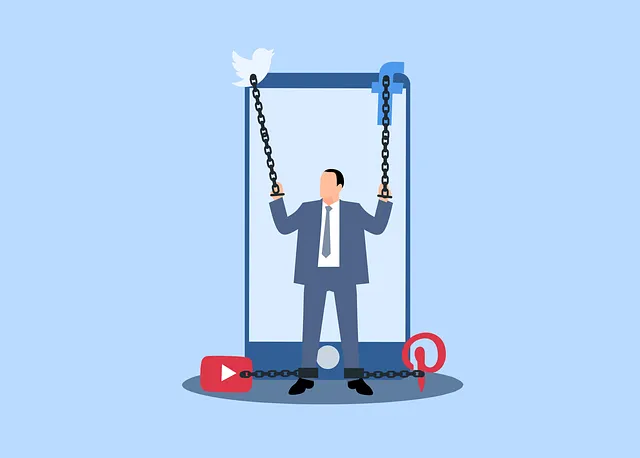The media's portrayal of mental health significantly influences public opinion and access to care at facilities like the Kaiser Permanente mental health facility in Lafayette. Positive, accurate representations reduce stigma and encourage help-seeking behaviors, while negative stereotypes hinder support. To counteract this, comprehensive Mental Health Policy Analysis and Advocacy, coupled with Public Awareness Campaigns Development, are crucial. Organizations like Kaiser Permanente Lafayette offer specialized care, reduce stigma, and increase accessibility to underserved populations through initiatives such as empathy-building personal stories and community outreach, challenging negative media portrayals and creating a more supportive environment for mental health struggles.
The media’s portrayal of mental illness significantly influences societal perceptions and understanding of neurological diversity. This article explores this complex issue, offering a comprehensive guide to challenging negative stereotypes through improved media representation. We delve into the impact of current narratives, using Kaiser Permanente’s Lafayette Mental Health Facility as a case study to highlight real-world consequences. By examining challenges and presenting practical strategies for change, we advocate for more accurate and empathetic portrayals in media, ultimately fostering better mental health support and community integration.
- Understanding the Impact of Media Portrayal on Mental Health Perception
- Exploring the Current State: Kaiser Permanente's Lafayette Mental Health Facility as a Case Study
- Challenges and Stereotypes in Media Depictions of Mental Illness
- Strategies for Positive Change: Enhancing Representation in Media
- Implementing Solutions: A Collaborative Approach with Mental Health Facilities
Understanding the Impact of Media Portrayal on Mental Health Perception

The media plays a powerful role in shaping public perception about mental health, significantly influencing how individuals understand and respond to various psychiatric conditions. Positive and accurate representation in the media can foster empathy, reduce stigma, and encourage those struggling with their mental well-being to seek help. Conversely, negative or stereotypical portrayals can perpetuate misconceptions, leading to further marginalization of individuals already navigating emotional healing processes. This is particularly relevant for those seeking support at facilities like the Kaiser Permanente mental health facility in Lafayette, where public perception can impact access to care.
A comprehensive Mental Health Policy Analysis and Advocacy, coupled with well-designed Public Awareness Campaigns Development, is essential to counteract harmful media stereotypes. By promoting balanced narratives that humanize mental illness experiences, these initiatives can help create a more supportive environment. This, in turn, may encourage individuals to openly discuss their struggles and pursue treatment options available at healthcare facilities like Kaiser Permanente, ultimately contributing to improved public health outcomes.
Exploring the Current State: Kaiser Permanente's Lafayette Mental Health Facility as a Case Study

The current state of mental health representation in media is a complex issue, and exploring real-world facilities offers valuable insights. Taking Kaiser Permanente’s Lafayette Mental Health Facility as a case study provides a glimpse into the challenges and potential solutions within the healthcare system. This facility serves as a crucial resource for the community, offering specialized care and support for individuals facing mental health struggles.
The Lafayette site highlights several key areas that media representation aims to address. By implementing Empathy Building Strategies, such as personal stories shared by patients, the facility fosters understanding and reduces stigma. Additionally, Mental Wellness Coaching Programs Development has been integral to empowering clients with coping mechanisms and self-care practices. Furthermore, their Community Outreach Program Implementation reaches underserved populations, ensuring that mental health services are accessible and inclusive. These initiatives demonstrate a comprehensive approach to challenging negative media portrayals and creating a more supportive environment for those dealing with mental illness.
Challenges and Stereotypes in Media Depictions of Mental Illness

The media’s portrayal of mental illness often presents significant challenges and perpetuates harmful stereotypes. Many representations in films, television shows, and news articles still adhere to simplistic and inaccurate narratives, such as portraying individuals with mental health conditions as violent, unpredictable, or completely disabled. These stereotypes not only distort the lived experiences of those affected but also contribute to stigma and discrimination. For instance, depicting characters in a crisis without providing context or showing recovery processes can reinforce the idea that mental illness is an unmanageable burden.
A positive shift towards more nuanced and realistic portrayals is essential. Organizations like Kaiser Permanente’s mental health facility in Lafayette are working to challenge these stereotypes by promoting awareness and education. By presenting diverse stories, including those focusing on depression prevention and self-esteem improvement, media can foster empathy and understanding among audiences. Accurate representation encourages viewers to recognize the complexities of mental health issues and promotes support for individuals seeking help.
Strategies for Positive Change: Enhancing Representation in Media

Media plays a powerful role in shaping societal perceptions, and this is especially true for mental health. Positive change begins with enhancing representation in media, ensuring that stories about mental illness are diverse, accurate, and empowering. Organizations like Kaiser Permanente’s mental health facility in Lafayette are at the forefront of this movement, advocating for better portrayal.
By incorporating real-life experiences and showcasing individuals from various backgrounds, media can foster understanding and empathy. This strategy not only aids in breaking stereotypes but also encourages viewers to seek support when needed. Initiatives focused on self-esteem improvement, stress management, and trauma support services can benefit immensely from this approach, ultimately contributing to a more inclusive and supportive society.
Implementing Solutions: A Collaborative Approach with Mental Health Facilities

To effectively challenge the stigmatization of mental illness in media, a collaborative approach between media outlets and mental health facilities like Kaiser Permanente’s Lafayette location is crucial. This partnership can facilitate accurate representation through consultation with professionals who can provide insights into specific disorders, ensure cultural sensitivity, and share real-life stories. Such collaboration also opens doors for community outreach program implementations, enabling targeted initiatives that educate the public about mental health issues.
One key strategy within this partnership is adopting effective communication strategies. Media organizations can learn to convey complex mental health topics in accessible language while showcasing recovery stories to counterbalance negative stereotypes. Additionally, boosting confidence among individuals with mental illness through these platforms—by highlighting their strengths and experiences—can foster a supportive environment, encouraging them to seek help and share their journeys.
The article highlights the significant impact of media portrayal on public perception of mental health, specifically focusing on the case study of the Kaiser Permanente mental health facility in Lafayette. It underscores the need for more accurate and nuanced representations to challenge stereotypes and foster understanding. By examining current practices and implementing collaborative strategies with mental health facilities, we can create a media landscape that enhances awareness, reduces stigma, and promotes better support systems for individuals facing mental illness. This collective effort is vital to revolutionizing how society views and addresses mental health concerns.






